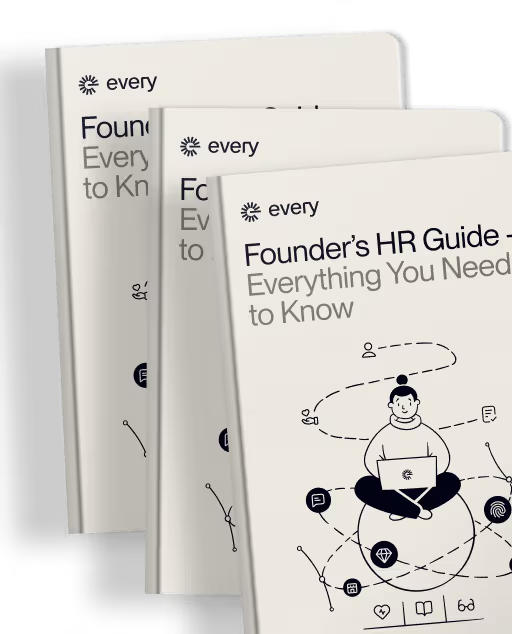30+ Banking Terms Every Startup Should Know (in 2022)

Banking Terms and Definitions Every Startup Needs to Know.
Banking plays a pivotal and continuous role in any entrepreneur’s or small business owner’s journey. Whether it's a simple act of opening a business bank account, or applying for a loan or making payroll -- banking is an integral part of any business. However, there are way too many terms to know and comprehend. Thus, we've created this detailed glossary page for key banking terms and definitions that every startup entrepreneur must know.
1. Account Number
It is a unique string of numerical digits used to identify an account in a bank or financial institution. Every account you own has one attributed to it. Your account number is a unique identifier needed to send and receive funds to your bank account.
2. Account Statement
It is a document prepared by a bank that shows an account's transaction history over a particular period. It records the movement of money in and out of all accounts held by an individual or a business.
3. Annual Percentage Yield (APY)
It refers to the rate of return on an investment over a year, considering the effects of compound interest. It is a means to calculate the amount of money accrued by an interest-bearing account annually.
4. ACH [Automatic Clearing House]
It is an electronic system that processes transactions between financial institutions. It is a crucial component of national and international banking that allows the electronic transfer of funds and online payments into depository institutions.
5. Available Balance
Your available balance is the total amount of money accessible in your account, excluding unprocessed debits and credits. It includes funds or deposits free for withdrawals, transfers, and other immediate uses.
6. Collateral
It refers to the tangible property or asset used as a legal exchange while taking a loan from a lender such as a bank. It is a security that protects the lender if the borrower defaults and is unable to make payment. Therefore, when you apply for loans, it is vital to have an asset that can be used as collateral, as this will improve your chances of getting it.
7. Checking Account
A checking account is a type of bank deposit account that allows easy access to your money for daily transactions. It's also called a transactional account and permits multiple withdrawals and unlimited deposits. However, most traditional checking accounts don't allow you to earn interest.
8. Compound Interest
It is the interest on a loan, bank deposit, or investment, and it is based on the initial principal and includes the previous interest earned on it. Contrary to simple interest, in this case, the interest earned is reinvested or lent out, increasing the principal and earning you more interest.
9. Corporate Card
It is a credit or debit card issued to a company or business corporation. It is used by the business owners, directors, and employees to pay for authorized business expenses directly from the company's account. The company is legally responsible for all payments charged to the corporate card.
10. Debit Card
A debit card is a card that allows the holder to electronically access the money in their account for transfers and other transactions. Payments are directly deducted from the checking account of the cardholder. Unlike a credit card, this is not a borrowing account.
11. Digital Currency
It refers to a currency that exists only in a digital or electronic form. It is a medium of payment that is generated, stored, managed, and exchanged over a digital system. Bitcoin or other cryptocurrencies are recorded in a public ledger. Unlike traditional currencies such as the USD, they are not backed by a country’s governing banking authority.
12. Direct Deposit
A direct deposit is the electronic transfer or deposit of funds into an account by a payer. Unlike cheques, direct deposits require no physical appearance at the bank. Instead, it is done through an electronic network called the automated clearing house (ACH).
13. Electronic Check Presentment
The electronic transfer of check information and images between banks speeds up the check-cashing process. It involves taking pictures of the front and back of a check and sending these images to the payer's bank for processing. In contrast, traditional check deposits would require the bank account holder to take the check physically to a retail bank to verify and process it.
14. Electronic Funds Transfer
It refers to the electronic transfer of money from one bank account to another through a computer-based system. It is an automatic movement of funds within a financial institution or across multiple ones without staff interference.
15. FDIC Insurance
The Federal Deposit Insurance Corporation (FDIC) provides insurance for deposits made in American depository institutions. This insurance covers up to $250,000 of deposits in qualified bank accounts.
16. Frozen Card
A card is said to be frozen when transactions, including withdrawals and online payments, are blocked. This often occurs when you report your missing card or fraudulent behavior is detected on your account. In some cases, you might be able to perform other tasks such as deposits; however, it depends on the bank or financial institution.
17. Insufficient Funds
Insufficient funds occur in a situation where the available balance of an account is not enough to cover a payment or fees. It defines the deficit state of a bank account in relation to transactions such as electronic transfers and withdrawals.
18. Interest
Interest is a fee paid or received for borrowing or lending money. It applies to savings accounts, certificates of deposits, and money market accounts.
19. Interest Rate
An interest rate is a percentage of the money borrowed or lent to be paid or received as interest over a particular period. Debts such as loans and credits attract interest. Also, savings and investment accounts such as certificates of deposit, mutual funds, stock purchases, etc., also include interest rates.
20. Invoice
It is a commercial document issued by a seller to a buyer, requesting payment for goods and services provided. It highlights the goods and services purchased, the quantity, the amount to be paid, and the deadline for payment.
21. KYC
It is an abbreviation for Know Your Customer. It is a term that refers to the background check done by banks to determine your company's eligibility for funding (capital loan).
22. Liquidity
It is basically your company's reserve. Liquidity means the particular asset or extra savings that are easily accessible to your company in case of unforeseen financial setbacks.
23. Margin Call
A margin call requests additional funds, capital, or securities when a margin account runs low on capital due to trade losses. It occurs when the value of securities in your investment account falls below the minimum requirement level called maintenance margin.
24. Online Banking
Online banking is the execution of financial transactions done over the internet. It is also known as internet banking, home banking, web banking, or mobile banking. It allows you to quickly access your bank account and perform transactions on your phones and computer from the comfort of your home.
25. Online Bill Payment
It is the payment of one-time or recurring bills over the internet through a secure electronic service. It removes the hassle of carrying cash around or writing checks and mailing them.
26. Overdraft
An overdraft allows you to borrow money from the bank by withdrawing more money than you have in your current account. It is a type of loan charged by the bank. It typically involves transaction fees and interest for the amount that is borrowed.
27. Personal Identification Number (PIN)
A PIN is an account security measure made up of a combination of numbers to protect and secure an account from unauthorized access. It is usually associated with credit or debit cards and may be needed to complete transactions.
28. Routing number
It is a bank identification number. While an account number identifies an account in a bank, a routing number identifies a financial institution. It is a nine-digit number usually found at the bottom of a check and specifies what bank your account is in.
29. Spend limit
It refers to the daily or monthly restriction placed on debit and credit cards, preventing card holders from spending above a particular amount of money. The cards are usually declined when they have reached the spending limit.
30. Stablecoin
A stablecoin is a cryptocurrency whose value is connected to an external asset or reference such as gold or the U.S. dollar. It is considered a more useful medium of exchange and provides a stable means of trading more volatile cryptocurrencies.
31. Treasury
Treasury involves the management of cash flows, liquidity, and financial risks. This is a department that oversees a company's investments and financial assets. It also ensures the assets of a business match its liabilities.
32. Treasury Bonds
Treasury Bonds are debt securities (often fixed) issued and backed by the U.S. Federal Government. They are often considered the least risky investments since they are backed by a government’s ability to tax its citizens. The interest payments on these bonds are made semi-annually. Interest income is exempt from state and local incomes tax.
33. Virtual Card
It is a digital payment card created online with the same features as a credit or debit card. It is a convenient means of payment protected by encryption. The virtual card is stored on your phone wallet and can be used to pay online and in stores.
34. Wire Transfer
Wire transfer is another type of electronic funds transfer (EFT). It is the electronic movement of money between local or international banks. It involves transferring money through a wire or network such as the Federal Reserve Wire Network (FedWire).
35. Yield
It is the return on an investment over a period, represented in percentage and based on its cost. For example, it refers to the profits made from interest or dividend payments on bonds, stocks, and other securities investments.
Up to 3,500 bonus and 3% cash-back on all card spend [3], 6 months off payroll, and 50% off bookkeeping for 6 months, free R&D credit.
Frequently Asked Questions
- How do I sign up for Every?
You can get started right away—just click “Get Started” and follow a short onboarding flow. Prefer a little help? One of our specialists can walk you through incorporation, banking, payroll, accounting, or whatever you need.
- What features does Every offer?
Every gives startups a complete back office in one platform. From incorporation and banking to payroll, bookkeeping, and tax filings, we take care of the operational heavy lifting—so you can spend more time building, less time managing.
- How is Every different from other tools?
Most competitors give you software. Every gives you a full-stack finance and HR team—plus smart financial tools that actually benefit founders. Earn up to 4.3% interest on idle cash and get cash back on every purchase made with your Every debit cards, routed straight back to you.
Every is not a bank. Banking services provided by Thread Bank, Member FDIC. Your deposits qualify for up to $3,000,000 in FDIC insurance coverage when Thread Bank places them at program banks in its deposit sweep program. Pass-through insurance coverage is subject to conditions. The Every Visa Business Debit Card is issued by Thread Bank, Member FDIC, pursuant to a license from Visa U.S.A. Inc. and may be used anywhere Visa cards are accepted.
- Is my data secure with Every?
We use end-to-end encryption, SOC 2-compliant infrastructure, and rigorous access controls to ensure your data is safe. Security isn’t a feature—it’s foundational.
Can I switch to Every if my company is already set up?Yes—you can switch to Every at any time, even if your company is already incorporated and running. Whether you're using separate tools for banking, payroll, bookkeeping, or taxes, we’ll help you bring everything into one place. Our onboarding specialists will guide you through the process, make sure your data is transferred cleanly, and get you set up quickly—without disrupting your operations. Most founders are fully transitioned within a week.
- What stage of startup is Every best for?
Every is designed for startups from day zero through Series A and beyond. Whether you're just incorporating or already running payroll and managing expenses, we meet you where you are. Early-stage founders use Every to get up and running fast—with banking, payroll, bookkeeping, and taxes all handled from day one. Growing teams love how Every scales with them, replacing patchwork tools and manual work with a clean, unified system.
We’re especially valuable for teams who want to move fast without hiring a full finance or HR team—giving founders more time to build, and fewer distractions from admin and compliance
- How long does onboarding take?
Onboarding with Every is fast and efficient. For most startups, the process typically takes between 3 to 7 days, depending on your specific needs and how much setup you already have in place.
If you're a new company, you'll be up and running quickly—getting your banking, payroll, and bookkeeping set up without hassle. If you’re transitioning from another system, our specialists will help you migrate your data, ensuring a smooth switch with no gaps or errors in your operations.
We guide you every step of the way, from incorporation to setting up automated payroll to handling your taxes—so you can focus on growing your business. Our goal is to make sure you're fully operational and confident in your back office in under a week.
Practical Questions to Ask to Ensure Your Bank is Well Managed
How much liquidity does the bank have on hand to cover unexpected withdrawals or shortfalls?
What percentage of the bank's deposits are invested in longer-term securities and loans, and what percentage is kept as cash reserves?
How does the bank diversify its investment portfolio to minimize potential losses and reduce risks?











.png)
